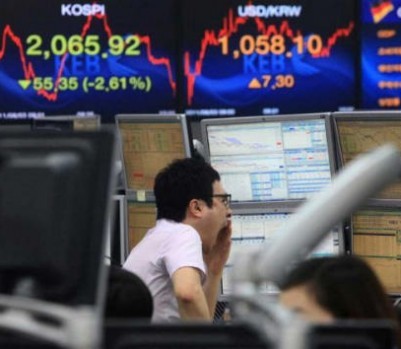The boomer benefits of ETFs
Post on: 20 Октябрь, 2015 No Comment

For an idea of how the popularity of exchange-traded funds has exploded, consider the following. The Investment Company Institute reports that exchange-traded fund assets rose by $10.4 billion, or 3.2 percent, to $335 billion in June. Over the preceding 12 months, ETF assets increased by $92.5 billion, or 38 percent. Domestic equity ETF assets increased $45 billion since June 2005, and global equity ETF assets rose $42 billion during the same period.
While still dwarfed by the estimated $8 trillion held by their domestic mutual fund counterparts, exchange-traded funds play an increasingly prominent role in many baby boomer retirement portfolios. An exchange-traded fund is a basket of securities traded on an exchange throughout the day. It is designed to replicate the performance of a stock or bond index. Boomers find their low expenses, greater transparency and increased tax efficiency appealing, especially in light of recent mutual fund late-trade and market-timing scandals. Because ETFs are widely available on most indexes and include most major sectors and global markets, they help in the asset allocation and portfolio diversification process. For advisors, ETFs mean less of a focus on selecting funds and managing the managers, and more time spent on client support and service.
ETFs allow individual advisors and their clients to access the same targeted asset allocation strategies usually associated with institutional investors, says Jeremy Held, national sales manager of Select Sector SPDRS.
Roughly 80 percent of the current ETF universe is sector based, while 20 percent is based on broad indexes. Close to 300 products are on the market, and new ETFs are on the way.
Lower expenses
Many ETFs are structured to control portfolio expenses. ETFs tend to have lower expense ratios than most actively managed funds (and even some index mutual funds). Morningstar reports that the average expense ratios for active and index small-cap funds were 1.55 percent and 0.83 percent respectively (year-end 2004). This compares with two small-cap iShares Funds with an expense ratio of 0.20 percent. While ETF transactions generate brokerage commissions, these costs can be offset by lower expense ratios for long-term holders.
In addition, they do not incur the usual operation and research costs associated with actively managed mutual funds.
Transparency
The true beauty of ETFs is that they work as completion products for advisors to craft better portfolios and allocations than by using mutual funds alone, says Jim Guilfoil, client executive ETF licensing for Russell Investment Group.
Because of their transparency (the ability to know exactly what and how much of a particular security is held), advisors have pinpoint accuracy when completing an asset allocation strategy with little fear of investment duplication or style drift. This transparency also can help advisors and clients better manage risk and volatility.
According to Held, ETFs are designed to track a benchmark as precisely as possible to give asset class and style purity.
Tax efficiency
Tax efficiency is a considerable ETF advantage over mutual funds. Actively managed funds with high turnover ratios and potentially greater tax liabilities can erode long-term returns. Most ETFs track an index, leading to lower portfolio turnover and, therefore, less likelihood of realization of capital gains. And, with individual stocks, ETFs are bought and sold on the exchange, so the tax implications caused by other shareholder activity is minimal. By contrast, if a mutual fund realizes capital gains, it is obligated to distribute those gains. Shareholders who remain in the fund may receive capital gains for an investment action they had nothing to do with.
When selecting investments and appropriate strategies for boomer clients, liquidity becomes an essential factor. As with any exchange-traded security, the market represents a meeting place for both buyers and sellers. The average daily trading volume and market capitalization of stocks generally reflect the activity of buyers and sellers within the exchange. Volume, therefore, provides an indication of the difficulty of getting into or out of a position, as well as the potential market impact of a trade. It would be easy to assume that market-trading volume of the ETF would be the indicator of its liquidity. However, most ETFs present two layers of liquidity — that of its own trading volume and the volume of its underlying shares.
For this reason, when measuring the liquidity of an ETF, it’s important to consider not only the liquidity of the secondary market but also the liquidity of the underlying portfolio of securities that comprise the fund.
So when should boomers look to ETFs over mutual funds?
Generally speaking, long-term investors making smaller, periodic investments should consider traditional index funds over ETFs, because index funds can be purchased with no transaction commissions, Guilfoil says. Investors with longer time horizons and larger, lump-sum amounts may want to consider ETFs over index funds especially in a taxable account.
With ETFs, advisors looking to target either a specific market segment or broad market positions through market capitalization, style, sector and country — among others — can efficiently design and adjust their clients’ portfolios. Ultimately, advisors have more precision when constructing portfolios and more control over costs, tax implications and portfolio risk.














